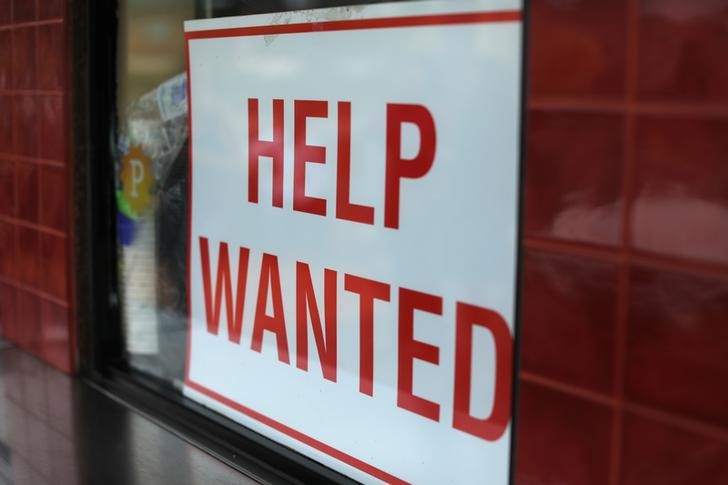By Wayne Cole
SYDNEY, April 19 (Reuters) - Australian employment barely rose in March while a sharp downward revision to February ruined a record-breaking run of gains, a disappointing outcome that hurt the local dollar and reinforced the case against a rate hike.
Thursday's figures from the Australian Bureau of Statistics showed just 4,900 net new jobs were added in March, well short of forecasts for 21,000.
Adding insult to injury, February was revised to show a 6,300 fall rather than the original 17,500 increase, wrecking what had been 17 straight month of rises.
The main revisions came in full-time jobs which were now estimated to have gained only 20,100 in February, instead of the initial outsized jump of 64,900. March was even worse with full-time positions falling 19,900.
The news was not all bad with annual job growth of 3.0 percent still twice the pace of U.S. job creation.
The unemployment rate was steady at 5.5 percent, after a downward revision to February. It has hovered between 5.4 percent and 5.6 percent for 11 months now.
The participation rate dipped to 65.5 percent, having peaked at 65.7 percent in January as more women entered the labour force.
The strength of employment has been one of the brightest parts of economy, so Thursday's soft report would likely cause some unease at the Reserve Bank of Australia (RBA). Growth in the resource-rich economy slowed in the fourth quarter of last year as bad weather hit exports. last week the head of the central bank had predicted further gains in jobs, even as he reiterated there was no strong case for a rate rise given wage growth continued to lag.
Investors reacted by further paring back the chance of a hike at all this year, with rate futures 0#YIB: implying only a 22 percent probability of a move by December.
A rise in the 1.5 percent cash rate is still not fully priced in until June 2019. The Australian dollar was duly knocked down to $0.7767 AUD=D4 , from an early high of $0.7796.
Gareth Aird, a senior economist at CBA, suspected unemployment would have to fall quite a bit further to generate anything like the wage growth of past years.
Partly that was due to stubbornly high levels of underemployment, where workers wanted more hours but were unable to get them. Underemployment used to track unemployment closely but has diverged markedly in the last couple of years.
Combined with strong levels of skilled migration and the increasing participation of women, the result was to make it harder for workers to demand larger wage rises.
"Skills shortages are not manifesting themselves for a sufficient period of time to allow workers to push for higher pay," said Aird.
"It might be less likely that the RBA lifts the cash rate over the next year given that it must become clear that wages growth is on a sustained upward trend before monetary policy is tightened."
